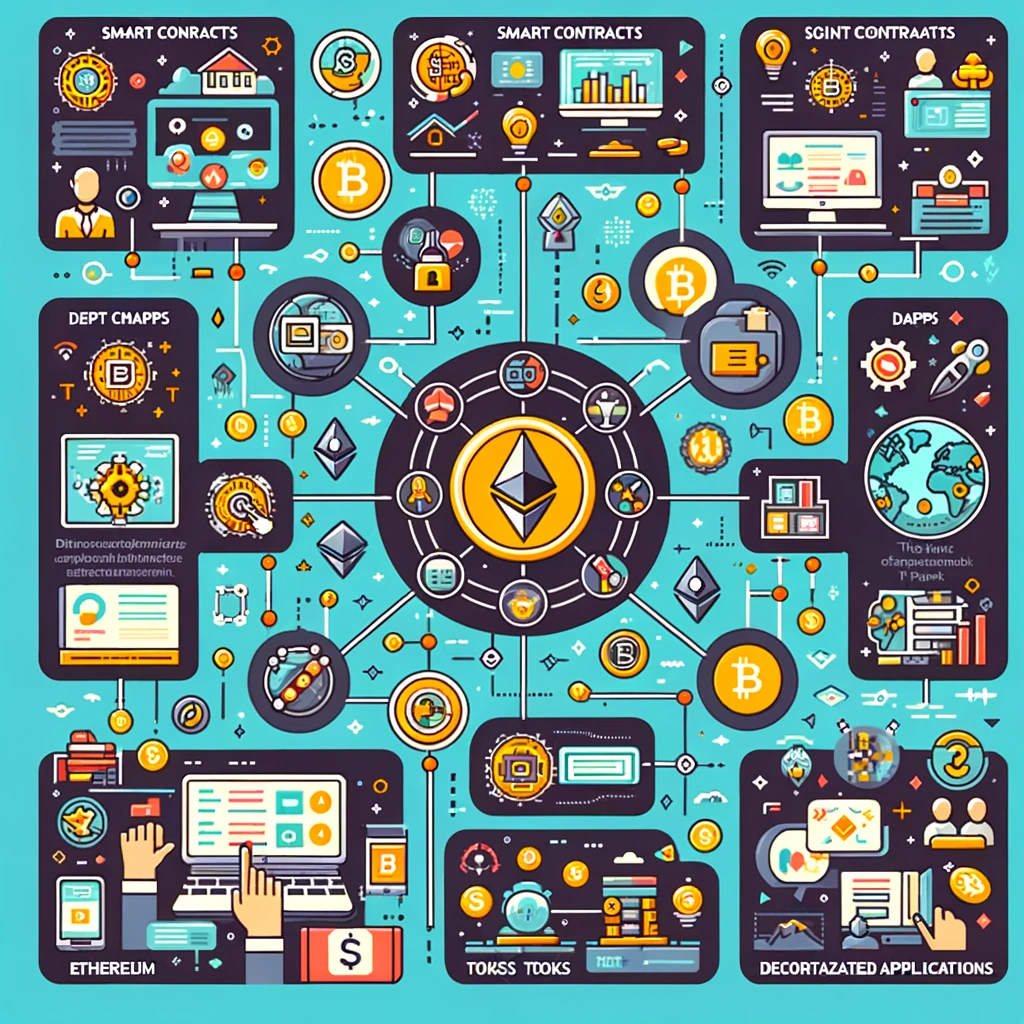Abstract:
This paper provides a comprehensive exploration into the realm of blockchain technology, with a particular focus on Ethereum, smart contracts, and the development of decentralized applications (DApps). It aims to furnish readers with a foundational understanding of blockchain's core principles, the functionality and application of smart contracts written in Solidity, the intricacies of DApp development, and the utility of Ethereum Virtual Machine (EVM). Through a detailed examination of programming languages, frameworks, and libraries essential for blockchain software development, such as JavaScript, Solidity, Hardhat, Truffle, Web3.js, and Ethers.js, this paper elucidates the connection between front-end interfaces and smart contracts, alongside a discussion on Ethereum gas mechanisms. Additionally, it delves into the significance of tokens within the Ethereum ecosystem and differentiates between Ethereum account types. The genesis and technological underpinnings of Ethereum, introduced by Vitalik Buterin, are contextualized within the broader narrative of blockchain technology's evolution, offering insights into its potential impacts across various sectors.
1. Introduction
Blockchain technology represents a paradigm shift in how information is shared, verified, and recorded. Its advent has heralded a new era of decentralized digital architectures, with Ethereum at the forefront of this revolution. This paper seeks to dissect the layers of blockchain technology, from its foundational structures to the development and deployment of complex decentralized solutions.
2. Blockchain Technology: An Overview
Blockchain is a distributed ledger technology that maintains a continuously growing list of records, called blocks, securely linked using cryptography. Each block contains a cryptographic hash of the previous block, a timestamp, and transaction data, making it resistant to data modification.
3. Ethereum: Beyond a Cryptocurrency
Ethereum, envisioned by Vitalik Buterin, extends the blockchain's utility beyond a pure payment system. It introduces a programmable blockchain that facilitates the deployment of smart contracts and DApps, driving innovation beyond financial applications to sectors like healthcare, logistics, and governance.
4. Solidity and Smart Contracts
Solidity is Ethereum's native programming language, designed for developing smart contracts that run on the Ethereum Virtual Machine (EVM). Smart contracts are self-executing contracts with the terms of the agreement directly written into code, enabling trustless and automated transactions.
pragma solidity ^0.8.0;
contract Greeting {
string public greet = "Hello World!";
function setGreeting(string memory _greet) public {
greet = _greet;
}
function getGreeting() public view returns (string memory) {
return greet;
}
}
Developing Decentralized Applications (DApps)
DApps are applications that run on a decentralized network, avoiding any single point of failure. Development involves creating smart contracts for the backend and designing a user-friendly front end. Tools like Hardhat or Truffle are used for development, testing, and deployment, while libraries like Web3.js or Ethers.js facilitate interaction between the frontend and the Ethereum blockchain.
Ethereum Virtual Machine (EVM) and Gas Mechanisms
The EVM executes smart contracts securely, with transactions requiring a fee, or "gas," to perform operations.
Tokens and ICOs
Tokens are used in ICOs to fund new projects. Ethereum supports ERC-20 tokens, crucial for project crowdfunding.
Ethereum Accounts: EOAs vs. CAs
Ethereum has Externally Owned Accounts (EOAs) controlled by private keys, and Contract Accounts (CAs) governed by smart contract code.
Conclusion
Exploring Ethereum and its capabilities provides insight into the future of decentralized technologies and their potential to revolutionize various sectors.
